Useful tips: how many times to water the cactus
Cactus - mysterious plants, in many respects different from the flowers we are used to. They are succulents that accumulate moisture inside the trunk and leaves in reserve. But not all succulents are representatives of the Cactus family.
Content:
Classification of cacti
Cacti are diverse in appearance, so it is sometimes difficult to determine their relationship to the Cactus family. All species are divided into 4 subfamilies, little similar to each other:
- Pereskievs - cacti with leaves. This includes only the genus Pereskia, numbering 17 varieties. They have spines and areola growth points, while they are on flowers. New shoots and flowers are formed from them. This only happens in cactus. Pereskiv fruits can be eaten.
- Opuntia, with spines and glochidia (spines, pointed in the form of a harpoon), are shrubs with strong juicy stems. Almost all of them consist of segments, strongly or weakly expressed. Young plants have leaves. They die off with age. Wood in its homeland, in Mexico, is widely used for the manufacture of furniture. Most varieties have edible fruits.
- Maihuenievs are similar in appearance to prickly pears, but without glochidia. They have conical leaves about 1 mm long. Practically not grown at home.
- Cactus, which include 80% of all cacti. They have no leaves or glochidia at all. Leaves replace thorns. The stems, with rare exceptions, are whole, do not have division into parts. Flowers are revealed in only one day, and in some varieties, only one night. Some of the plants of this subfamily are edible, they are eaten baked, some are edible.
All cacti are divided into several types according to growing conditions. Each of them has its own characteristics of cultivation. When buying a cactus, you need to correctly determine its type in order to know how to care for it. Cacti can be divided into the following groups:
- Wet forests. These are zygocactus, epiphyllum, phyllocactus. Plants love diffused light. Therefore, they are grown on the east and north windows. They do not like overdrying an earthen coma, the substrate must always be moist. In winter, they need to lower the temperature to 12-15 ° C and reduce daylight hours.
- Dry forests and grassy plains. In the morning and evening, they require the sun, at lunchtime they need to be shaded. For their cultivation, windows facing west or east are best suited. In winter, plants need temperatures up to 10 ° C, watering - 1-2 times a month.
- Desert cacti are installed on south-facing windows. They hibernate at temperatures no higher than 10 ° C. Water at this time once a month.
- Mountain cacti, which include rebuts, lobivia, oreocereus. Their roots are delicate and easily injured, do not tolerate waterlogging of the soil. In winter, the temperature should be no higher than 8 ° C, watering no more than 1 time per month.
Growing cacti
Acquired cactus cannot be installed directly on the window together with others. First, it needs to be quarantined for up to two months. During this time, it is necessary to determine if the cactus is infected with any diseases or pests. Better yet, transplant it into a new dish, treating it for prevention fungicides.
Features of growing cacti at home:
- In summer, the cactus grows at temperatures up to 24 ° C. In winter, most species need a drop in temperature. If you keep them at temperatures above 20 ° C, they will not bloom.
- Cacti need a lot of light. If there is not enough of it, the top of the trunk is pulled out, and the plant loses its attractiveness.
- In summer, cacti can be taken outside. You just need to take into account that they are very afraid of drafts. Plants must be protected from rain and wind with foil. First, cacti are taken out for several hours. Gradually increase the time spent on the street. After a couple of weeks, they can be left overnight. Changes in temperature at different times of the day temper the cactus, its thorns become shiny. This hardening strengthens the plant, helps it to endure the winter more easily.
- In winter, plants are placed closer to the glass. But you can't lean against him. It must be remembered that the cactus does not like to travel around the apartment. He does not tolerate only movement from one window to another badly. The cactus should not be rotated around its axis. Feed mineral fertilizer every 2 weeks from April to the end of August.
- If you water a cactus with hard water, which contains a large amount of salt, the soil dries for a long time, the lower part of the stem becomes covered with a brown salt coating. It spoils the appearance of the cactus, but will not do much harm.
- Pests common to most plants: aphids, mealybug, spider mite. You need to fight them by treating them with insecticides. But it is better to avoid contamination.
Plant transplant
The cactus is transplanted in the spring. Only young plants are transplanted annually. Those who have reached 4 years old - after 2 or 3 years. Cactus transplant utensils can be of any shape. But pots made of white polystyrene cubes have become popular for growing cacti. If they have a retractable bottom, then removing the cactus from such a pot is much easier.
The size of the pot is taken slightly larger than the diameter of the cactus. A layer of gravel is laid on the bottom, which will allow moisture to easily pass through the soil. The base of the cactus should be at the level of the pot. Spread the roots in different directions. Sprinkle with the mixture. It is advisable to put a layer of sand or gravel on top. It will protect the soil from compaction and drying out. You can pick up beautiful decorative stones that will decorate the pot.
After transplanting for 4 days, the cactus is not watered, but exposed to the sun after it has taken root.
The land mixture consists of washed river sand, finely broken bricks, peat, turf and leaf land. They make the composition loose and breathable. Peat is taken 2 times less than sand. It will help make the soil slightly acidic. The prepared soil is steamed to disinfect her.
Mixes for young and adult cacti differ in composition. For the young, you need to add sod land, for adults - clay. You can buy a ready-made mixture at a flower shop.
Cacti that grow quickly need humus. Eggshells are added to prickly species in the soil.
All about watering
Cacti do not require frequent watering with a small amount of water. It displaces air and prevents the roots from breathing. Most species require watering only when the earthy clod is completely dry. The exception is cacti of humid forests. For each apartment or room, the drying time of the soil can vary significantly.
When and how to properly water a cactus:
- To determine how dry the soil is, you need to make a depression in the corner of the pot and check the moisture manually.
- Water for watering cacti should be soft. It can be obtained using filters. You can boil running water from the tap, and then settle. Cactus does not absorb cold water, the temperature of which is below 12 ° C.
- Spill the earthen ball completely. Excess water flows into the sump. It is drained from there in half an hour. The disadvantage of this method is that nutrients move faster to the lower part and are washed out. There is a risk of water getting on the stem.
- You can pour water into the sump. Thus, it does not fall on the cactus stem. Most of the roots are at the bottom of the pot so they can absorb moisture. In this case, it is difficult to determine the right amount of water. This requires some experience.
- The cactus absorbs large amounts of water. He will assimilate it for a long time. The substrate dries out between waterings and is saturated with air. The roots breathe, the cactus grows.
How many times do you need to water the cactus:
- In winter, adult plants are watered according to the requirements of the species, approximately once a month. Small - once every 2-3 weeks, a couple of tablespoons of water is enough for them. You can spray the plants with warm water once a month and water them once. During the formation and growth of buds, cactuses are only sprayed.
- In the spring, from March, the amount of watering is increased. In March, it is enough to do this once every 2 weeks, in April - once a decade, in May - once a week. Spray every 2-3 weeks.
- In the summer, in the heat, the soil dries out very quickly. Therefore, most species are watered every day or every other day.
- In the fall, the number of watering is gradually reduced: in September, once a week, in October - once every 2 weeks. From November to March, a period of dormancy and wintering begins again.
In watering cacti, some restrictions must be observed. Do not water in the heat when the sun is at its zenith. This can cause burns. Do not water on a rainy day. It is best to do this in the evening. Some types of cacti in the hottest period cease to function, do not grow. Therefore, it is not necessary to water them at this time. After all, they cannot absorb water in such a state. When caring for cacti, you need to remember that it is better to underfill the water than to pour it in too much.
More information can be found in the video:



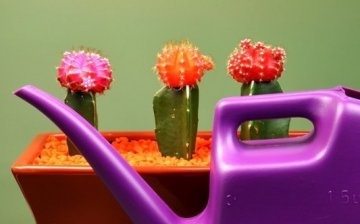

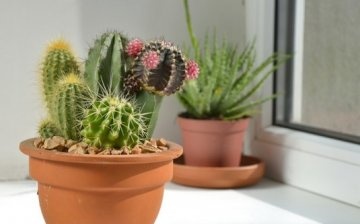
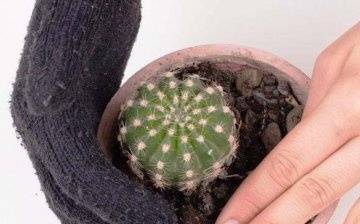






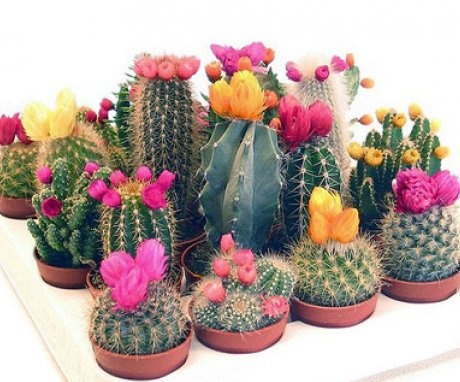

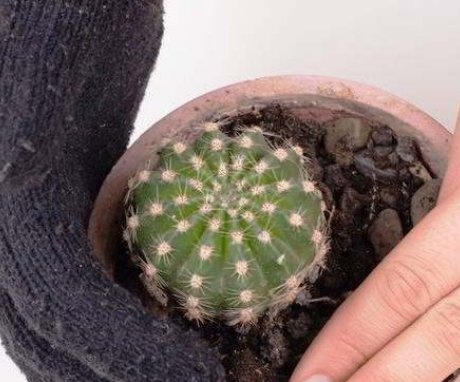

I water my "Decembrists" on average once a week, pour off abundant and excess water from the pallet in an hour. I also feed occasionally. In December and January, admire the beautiful flowers.
I always believed that cacti are rarely watered, but the article says that in the summer heat, you need to water every day. We water the cacti once every two weeks, and even less often in winter, and while they are growing, not a single one has dried up.